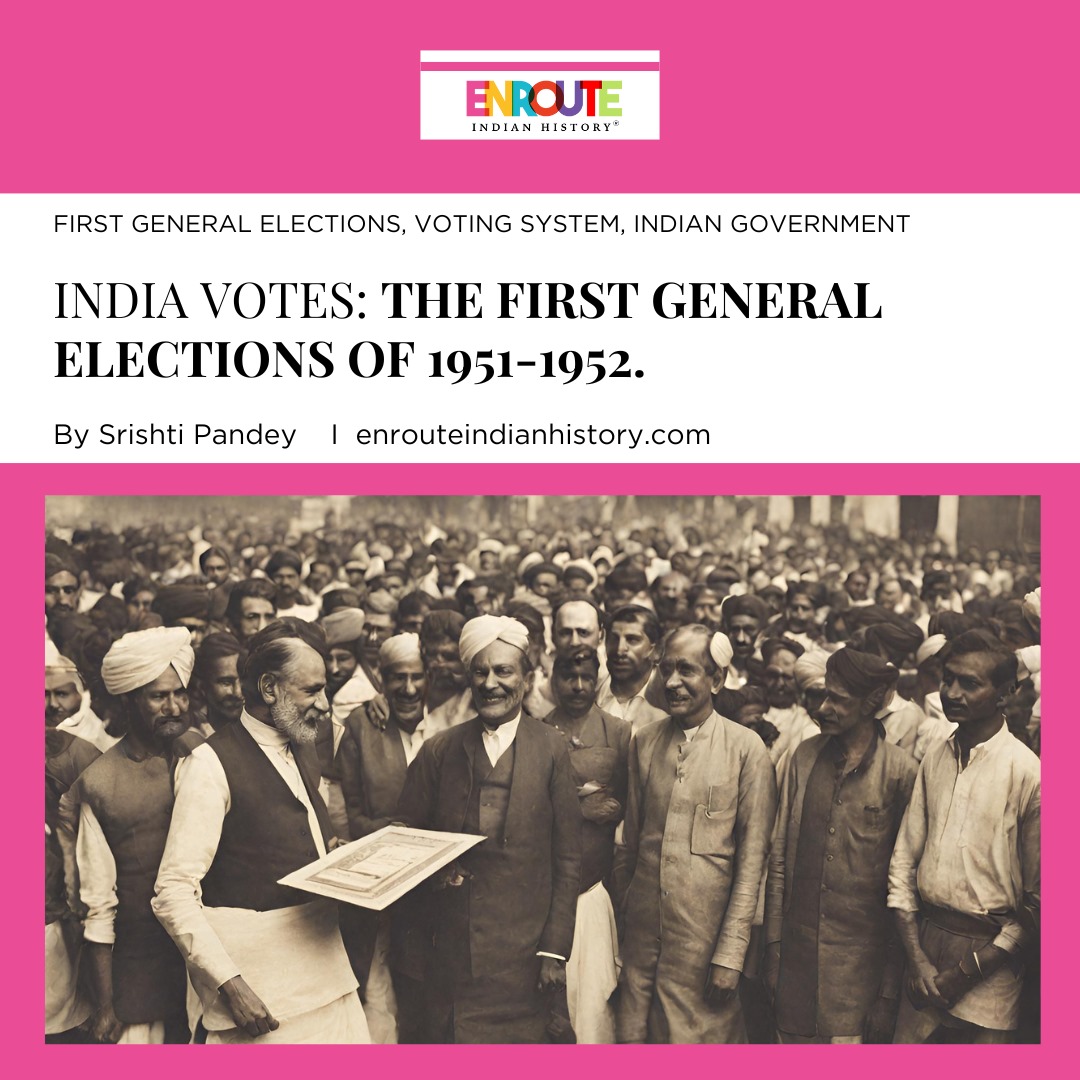How Kolkata’s 150-year-old Tram System is Still Keeping the City Going!
- enrouteI
- April 18, 2024
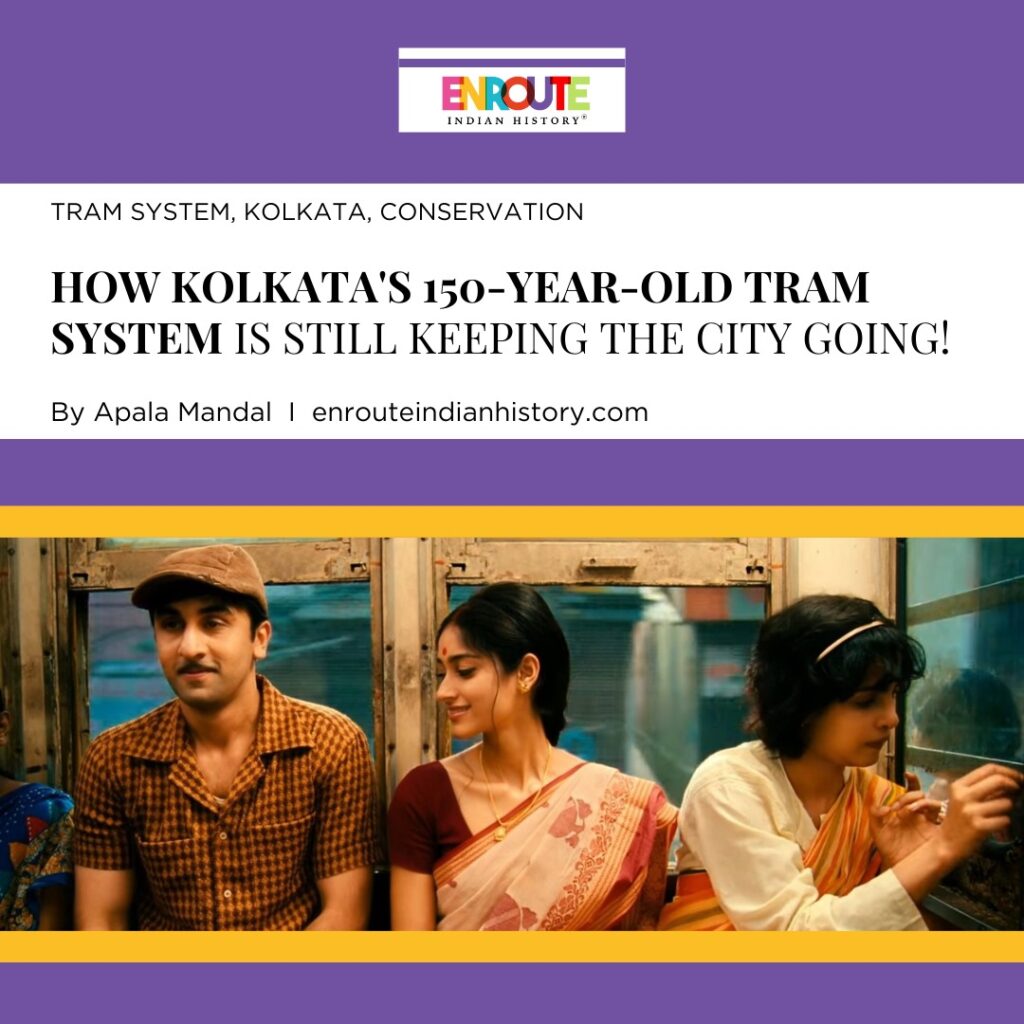
The term heritage has several connotations, but the most common understanding involves a form of inheritance. Our ancestors pass us down something—architecture, culture, nature, customs, modes of life—and the continued presence of this heritage in our lives adds to its richness, depth and vibrancy. In this context, the tram system of Kolkata is an incredible example of heritage. Over 150 years old, the tram system was the backbone of the city in earlier times. Today, it still serves as a cheap mode of travel for thousands of workers and acts as a living piece of history that draws sizeable tourist attention. The fact that the tram system still runs today is due, in no small measure, to the intense conservation efforts made by the generations before us. In one way, that struggle to keep the Kolkata tram system alive is also a form of heritage—an impetus to refuse the remnants of our national history to fade away!

Figure (a): The interior of many of the tram carriages still operating on Kolkata’s tramlines offers an old-world charm. While some modern fibreglass tram carriages have been introduced, it is still common to be greeted with sights like these when you hop on a Kolkata tram.
Source: Trainman
A Brief History of the Trams:
On 26th February 2023, the Kolkata tram system celebrated its 150th anniversary. On this occasion, the West Bengal Travel Department organised a ‘tramjatra’ event that was attended by tram enthusiasts from across the country and overseas (Sengupta 2023). Alongside being the oldest operating tram system in Asia, the tram system of Kolkata is a valuable national heritage. It is the only remnant of a more extensive colonial-era tram network that operated in major Indian cities like Bombay, Nashik, and Delhi.

Figure (b): Roberto D Andera, a former tram Conductor from Melbourne in Australia, poses for photos aboard a tram with his friend Tony Graham, in Kolkata on the occasion of the 150th anniversary of the Kolkata Tram System. Source: Partha Paul for the Indian Express.
The earliest records we have of tram transport in Kolkata are from 1873, with a horse-drawn tram carriage traversing the path between Sealdah and Armenian Ghat Street. The idea for their introduction was to offer a form of transport that could serve the needs of people and goods. However, the horse-drawn trams were discontinued soon after, as they were not very economically viable. After a brief experiment with steam trams, they were replaced with electric trams in the early 1900s, which gained immense popularity. New lines popped up, and in its heyday, the Kolkata tram system operated 38 routes across the city (Gomes 2022). In recent times, only three of these routes have been operating on a regular basis: route 24 / 29 from Tollygunge to Ballygunge, route 25 from Gariahat to Esplanade, and route 5 from Shyambazar to Esplanade.
Conservation and Protection:
With such a long presence in the Bengali cultural space, it is no surprise that trams feature heavily in the Bengali imagination. For instance, the tram conductor is a character in many Bengali movies, stories and jokes. Known for his distinctive apparel, his brisk ringing of the bell to signal the starting and stoppage of the train, his sleek leather satchel and the crisp, orderly stack of notes found between his fingers—the tram conductor cannot be understood without taking into consideration the heritage of the tram system and the role it has played in keeping Kolkata connected.
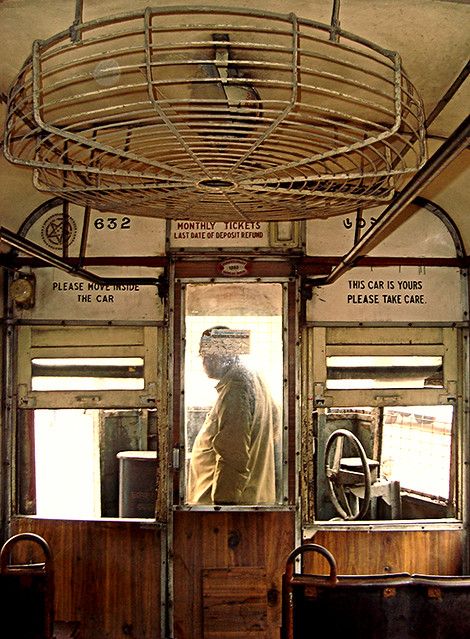
Figure (c): The tram driver, as seen from inside the carriage. Source: blind dayze on Flickr
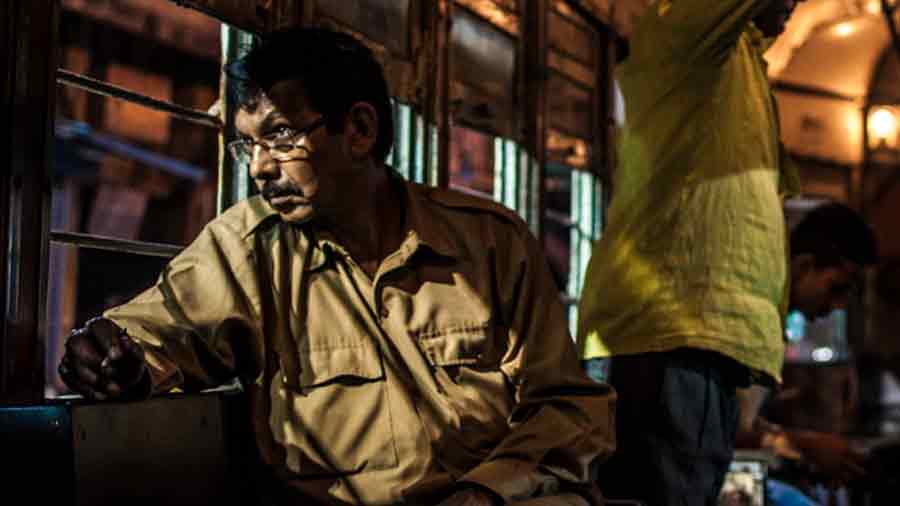
Figure (d): The tram conductor, who works in close partnership with the tram driver to ensure the running of the carriages and the ease of transport of passengers
Source: Ritagnik Bhattacharya for Telegraph India
For movies and films set in Kolkata, a scene shot in the tram remains an unparalleled form of world-building. Part of the heritage of the trams is that they continue to support endeavours in the arts today. From classics like Satyajit Ray’s Mahanagar (1963) to more recent films like Barfi (2012) and Kahaani (2012), trams are used to symbolise Kolkata alongside other common symbols like Howrah Bridge and Victoria Memorial (Dasgupta 2023). In fact, in Ray’s Mahanagar, cinematographer Subrata Mitra filmed the entire two-minute-long title sequence of the film by focusing his camera on a moving tram cable. Thus, if heritage implies a connection to the identity of a group or collective, Kolkata’s tram system surely fulfils such criteria. Unsurprisingly, it is also featured extensively in advertisements by West Bengal Tourism, emphasising again the need to conserve and protect the heritage of the system and its history.
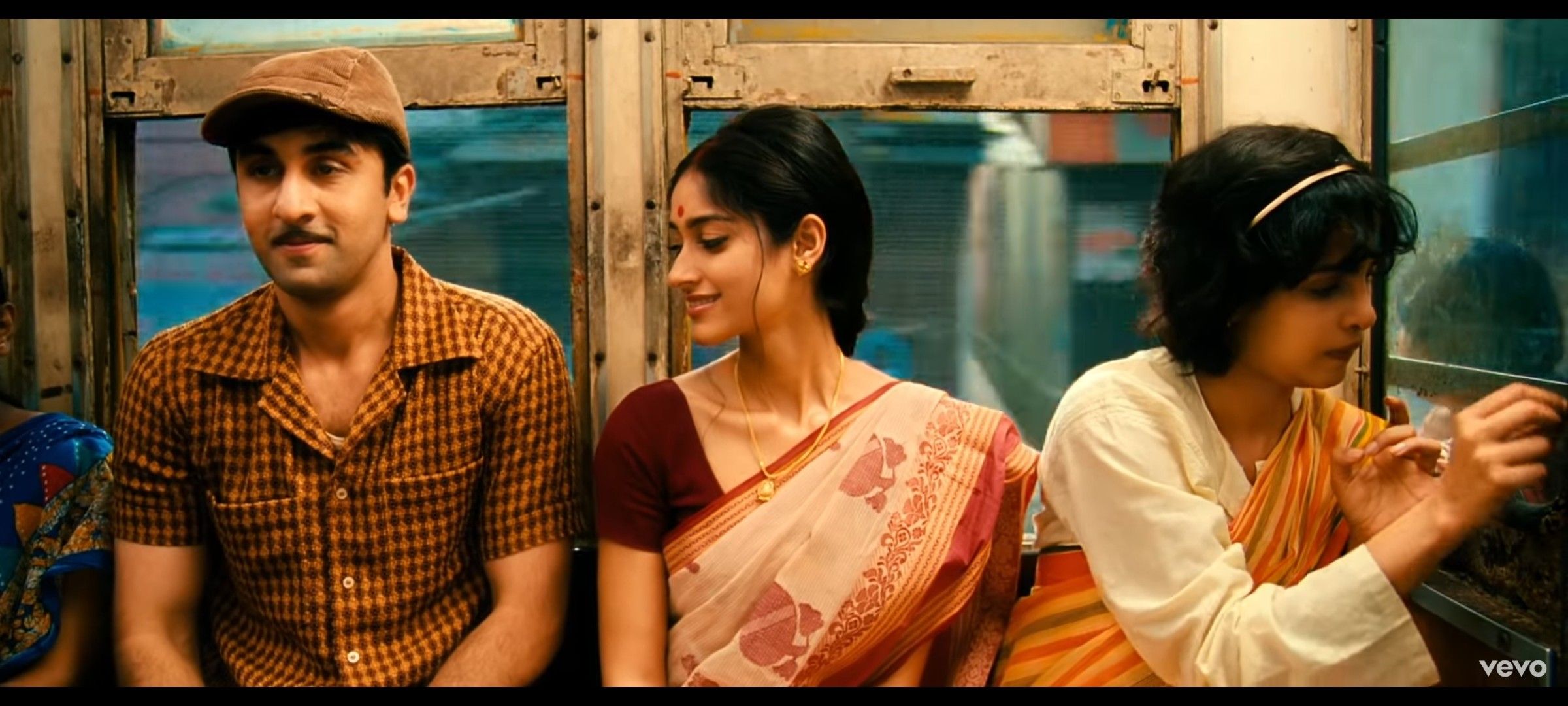
Figure (e): A still from the 2012 movie Barfi, shot in the Kolkata Tram
Source: NewsBytes
In an effort to commemorate the legacy of the trams, the government inaugurated the Smaranika Tram Museum in 2014, located at the Esplanade depot. The main attraction of the museum is a 1938-built tram car (still operational!) converted into a renovated museum space. The museum houses “photographs of different kinds of trams in history, old archives, replicas of horse-driven car, and various tram cars in history, tram tickets and passes, badges, caps and others apparels worn by the conductors and drivers, along with different kinds of equipments like controllers” (Trainman 2019).
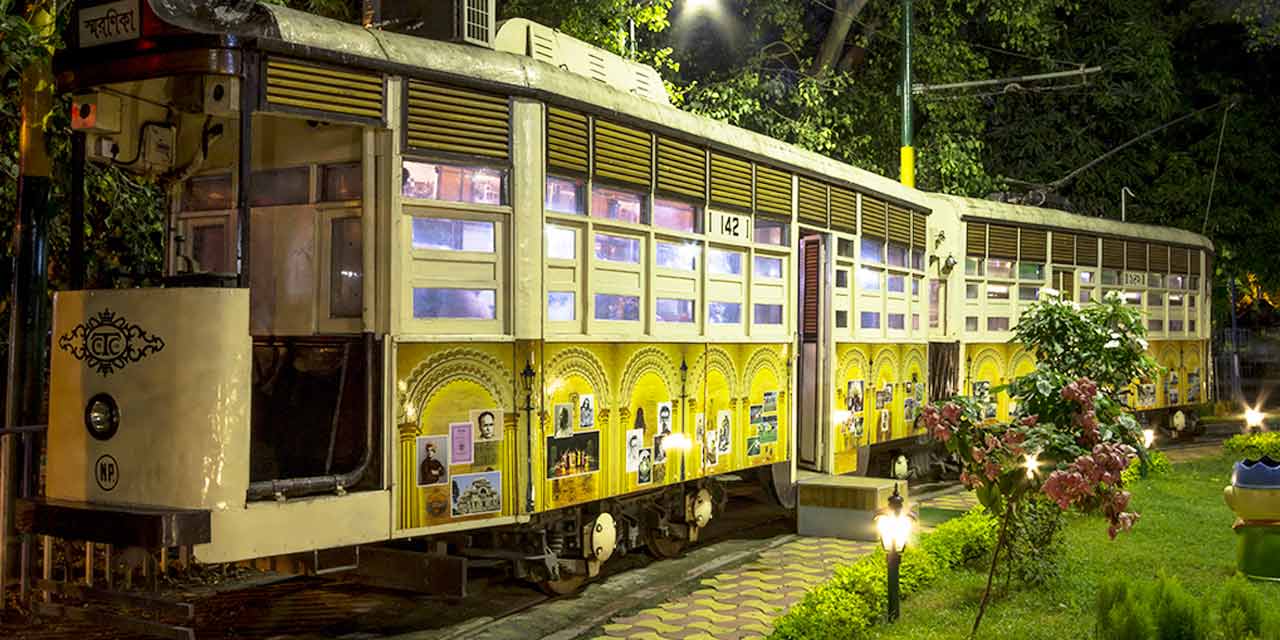
Figure (f): The Smaranika Tram Museum, housed inside a renovated tram from the 1930s.
Source: Kolkata Tourism
In 2016, an apolitical organisation called the Calcutta Tram Users Association (CTUA) was created and registered under the Society Act. Formed by the common people of West Bengal, members came together in their shared love for the tram system. Since 2016, they have been at the forefront of advocating for the conservation of trams. In January 2024, the Calcutta High Court indicated that the existing tramlines would be shut down further, and only one route would operate in the city for heritage purposes. Activists from CTUA were the most vocal in their opposition to this move, with President Debasish Bhattacharya suggesting that it was confusing that, “at a time when trams are being revived in places such as Lisbon, Dublin and Berlin, tram lines in Kolkata are being shut down” (Thakur 2024).

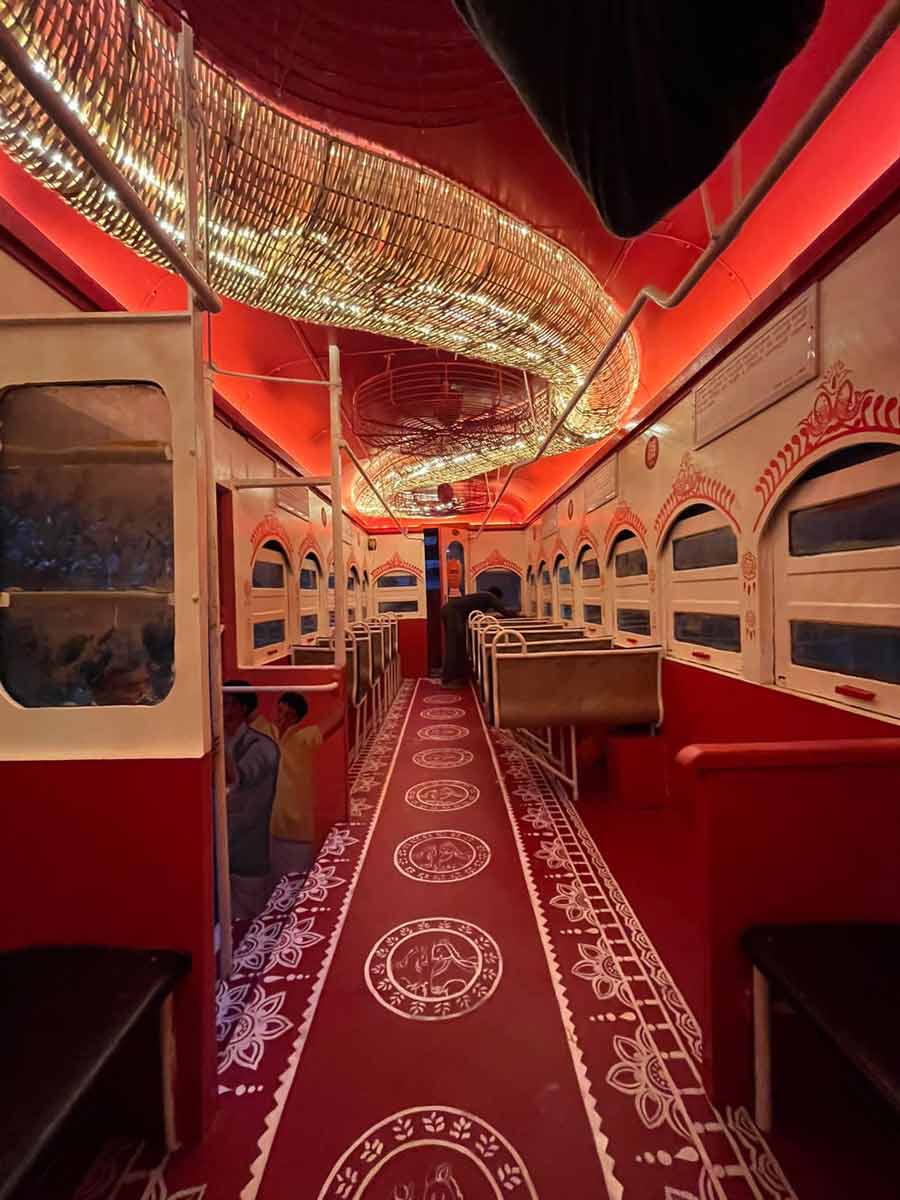
Figure (g) and (h): The exterior and interior of the Puja Special Tram, launched in 2023.
Source for figure (g): Outlook Traveller
Source for figure (h): Telegraph India
This points us towards the efforts being made to keep Kolkata’s tram system relevant. In terms of tourism and cultural heritage, trams are often redecorated or repurposed to attract new audiences. However, the strongest claim for the continued deployment and usage of trams is the fact that they are a highly climate-friendly mode of intra-city locomotion. According to Jayali Wavhal (2022), some of the suggestions for revamping the tram system of Kolkata for the future include: running more lines regularly, expanding tram lines, making the purchase of tram tickets app-based, installing ACs and Wi-fi in trams, and introducing themes for trams such as libraries, art galleries, museums, and cafés. The goal is to gain a UNESCO World Heritage tag for the tram system, and further cement the legacy and heritage of this slice of national history.
References
Dasgupta, P. (2023). Why Bengali Films Are Giving Trams a Pass Now. The Times of India. 19 Feb. https://timesofindia.indiatimes.com/india/why-bengali-films-are-giving-trams-a-pass-now/articleshow/98055423.cms.
Gomes, L. (2022). In Pictures: Tracing the Vibrant History of Kolkata’s Trams. Telegraph India. https://www.telegraphindia.com/my-kolkata/places/in-pictures-from-the-early-1900s-to-smaranika-tram-museum-and-a-tramcar-restaurant-a-history-of-trams-in-kolkata-photogallery/cid/1852002.
Sengupta, A. (2023). 150th Anniversary of Calcutta trams: a Brief History of Trams in India. The Indian Express. https://indianexpress.com/article/explained/explained-culture/150th-anniversary-calcutta-trams-8469537/
Thakur, J. (2024). Once Symbolic of Old Calcutta, Trams May Halt in Their Tracks. Hindustan Times. https://www.hindustantimes.com/india-news/once-symbolic-of-old-calcutta-trams-may-halt-in-their-tracks-101704479129312.html.
Trainman (2019). Iconic Trams Of Kolkata. Trainman Blog. https://blog.trainman.in/blog/iconic-trams-of-kolkata/.
Wavhal, J. (2022). Reviving Heritage Mode of Transport, Kolkata Trams to Receive Facelift with Digitisation & Modifications. The Logical Indian. https://thelogicalindian.com/trending/kolkata-trams-to-receive-facelift-with-digitisation-modifications-39192.




